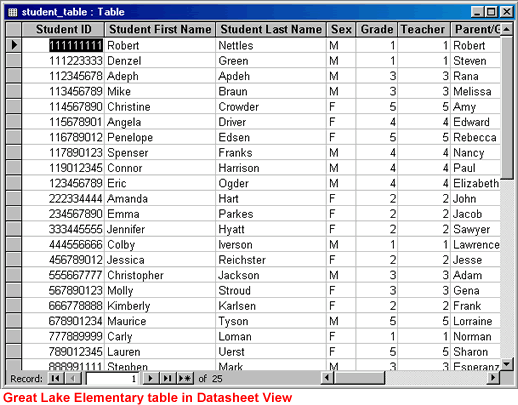
Microsoft Access 2000 stands as a robust tool in the realm of relational database management systems, offering users the capability to organize, store, and manipulate vast amounts of data efficiently. Among its many features, Access 2000 provides intuitive methods for adding table records, facilitating the process of data entry and ensuring the seamless integration of new information into databases. In this extensive guide, we’ll embark on a journey through the intricacies of adding table records in Access 2000, exploring various methods, best practices, and tips for maximizing efficiency and accuracy.
Understanding Table Records
Before delving into the process of adding table records in Access 2000, it’s crucial to grasp the concept of table records within the context of a database. In Access 2000, a table record, also known as a row or a tuple, represents a single instance or entry of data within a table. Each record consists of fields that correspond to specific attributes or properties of the data being stored. For example, in a table containing customer information, each record might include fields such as “Customer ID,” “Name,” “Address,” and “Phone Number.”
Methods of Adding Table Records
Access 2000 provides users with multiple methods for adding table records, catering to diverse preferences and workflow requirements. These methods include:
- Datasheet View: The datasheet view offers a familiar and intuitive interface for adding table records in Access 2000. To add a new record, users simply navigate to the last row of the datasheet and begin entering data into the fields. Access 2000 automatically adds a new record at the end of the table as data is entered.
- Form View: Forms provide a more structured and customizable environment for adding table records in Access 2000. Users can create custom forms tailored to their specific data entry needs, featuring controls such as text boxes, drop-down lists, and command buttons. To add a new record using a form, users can navigate to the form and use the designated controls to input data.
- Append Query: Append queries allow users to add records to a table based on data from another table or external source. Users can create an append query in Access 2000 by specifying the source of the data and the destination table, along with any criteria or conditions for selecting records to append.
- Import: Users can import data from external sources such as Excel spreadsheets, text files, or other Access databases into an existing table in Access 2000. The import process involves mapping fields from the source file to fields in the destination table, ensuring that data is imported accurately and efficiently.
Best Practices for Adding Table Records
While adding table records in Access 2000 is relatively straightforward, adhering to best practices can help ensure accuracy, consistency, and efficiency:
- Validate Data: Before adding records to a table, it’s essential to validate the data to ensure it meets the required format and criteria. Access 2000 allows users to set validation rules and data validation properties for fields, enforcing data integrity and minimizing errors.
- Use Input Masks: Input masks provide a structured format for entering data into specific fields, such as dates, phone numbers, or social security numbers. By applying input masks in Access 2000, users can standardize data entry and ensure consistency across records.
- Leverage Default Values: Default values can be assigned to fields in Access 2000, automatically populating new records with predefined values. This can streamline data entry and reduce the need for manual input, especially for fields with consistent or repetitive values.
- Avoid Duplicate Records: Duplicate records can lead to data redundancy and inconsistency within a table. Access 2000 offers tools and features, such as unique indexes and primary keys, to prevent the insertion of duplicate records and maintain data integrity.
Conclusion
Adding table records in Access 2000 is a fundamental aspect of database management, enabling users to input new data and expand their datasets with ease. By leveraging the various methods and best practices outlined in this guide, users can streamline the process of data entry, ensure data accuracy and consistency, and harness the full potential of Access 2000 for effective database management. Whether you’re a novice user or an experienced database administrator, mastering the art of adding table records in Access 2000 is essential for optimizing data management workflows and deriving valuable insights from your databases.